I biked down to the Leslie Street Spit the other day to look for winter birds and brought a camera with me in case anything good turned up. “The Spit,” as it’s known in Toronto, is a former landfill in the east end of the city that juts into Lake Ontario for about five kilometers (three miles). A disused lighthouse stands at the far end, and a paved loop road makes cycling an easy affair. Otherwise, the land is covered with habitats that include wetlands, wildflower meadows, and patchy forests of cottonwood, poplar, and birch. In winter, with the wind off the lake, the place acquires an ambience so bleak and grey that it’s almost Scandinavian.
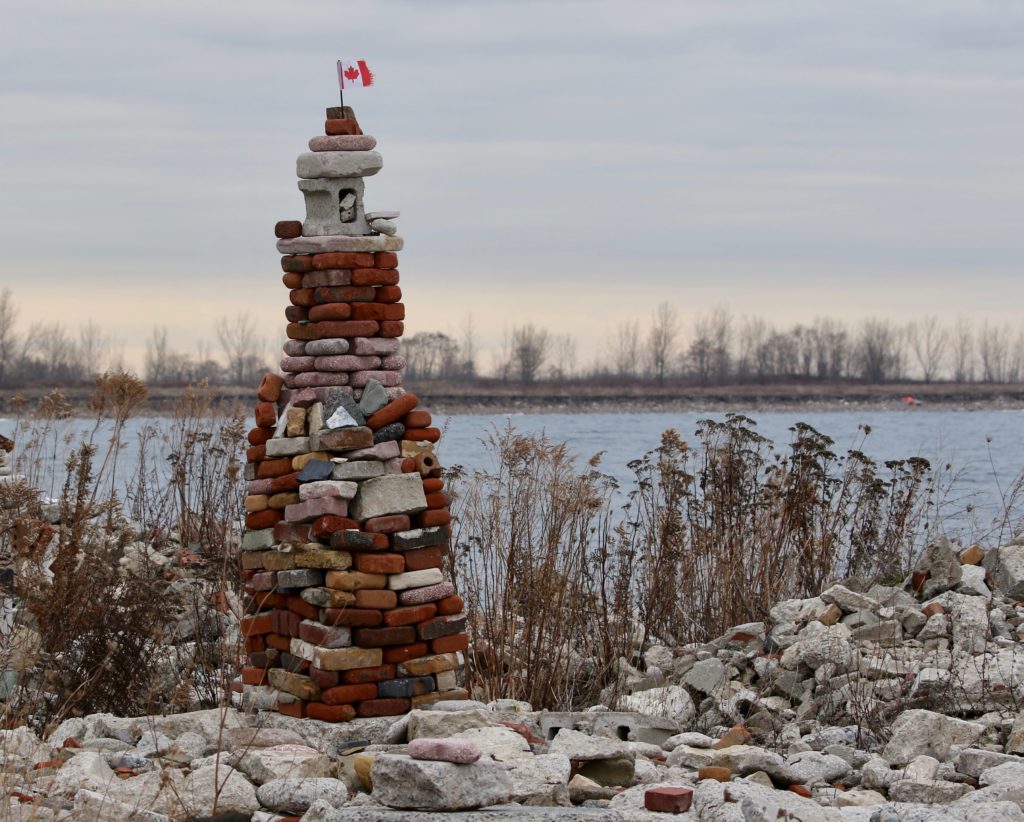
Ever since it first took shape 40 years ago, the Spit has functioned as a magnet for birds and for the people who love them. Thanks to its mix of habitats, the place attracts a wide variety of bird species—not just songbirds, but waterfowl and waders, hawks and owls, terns and gulls. More than 300 species of birds, some of them quite rare for the Toronto area, have been recorded on the Spit, and with the advent of global warming, new species are seen almost every year.
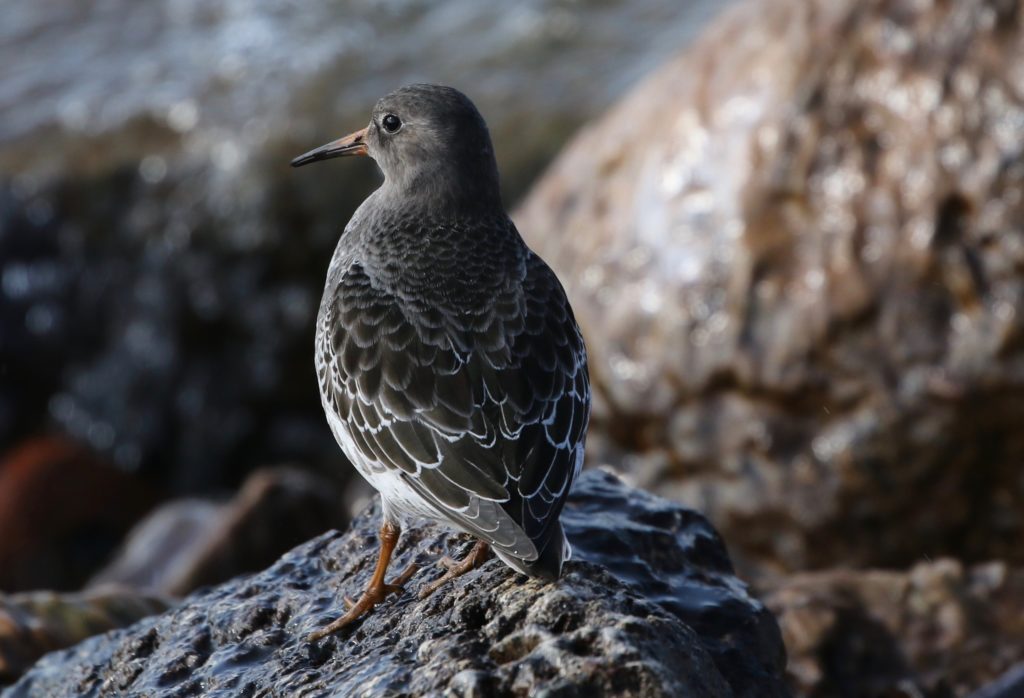
When I arrived the other day, I biked straight out to Pipit Point, the Spit’s southeast extremity and a good spot from which to scan the lake for different types of ducks and gulls. The point takes its name from the American Pipit, a robin-sized bird that forages there regularly during spring and fall migration.

When I scanned the waters around the point, I could see a pair of King Eiders quite far out. This is a type of sea duck that nests on the tundra surrounding Hudson’s Bay and that winters along the northeast coast of Canada and the United States. Eiders seem to prefer salt water to fresh, and only a few of them appear in the Great Lakes in any given year. The birds I was looking at were so distant that it was difficult to get a decent photo.
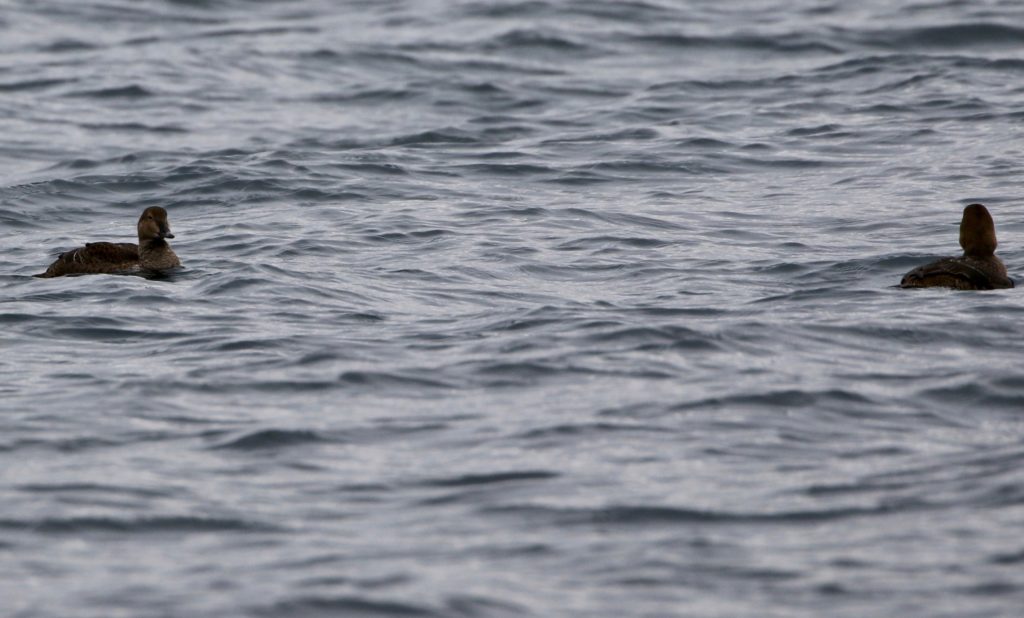
I decided to sit on the rocks at the tip of the point and see if the ducks would drift in closer. Just as I settled myself, a flock of Common Redpolls—a type of winter finch that sports a red beret and black goatee—flew in, and a few of them consented to pose for photos.

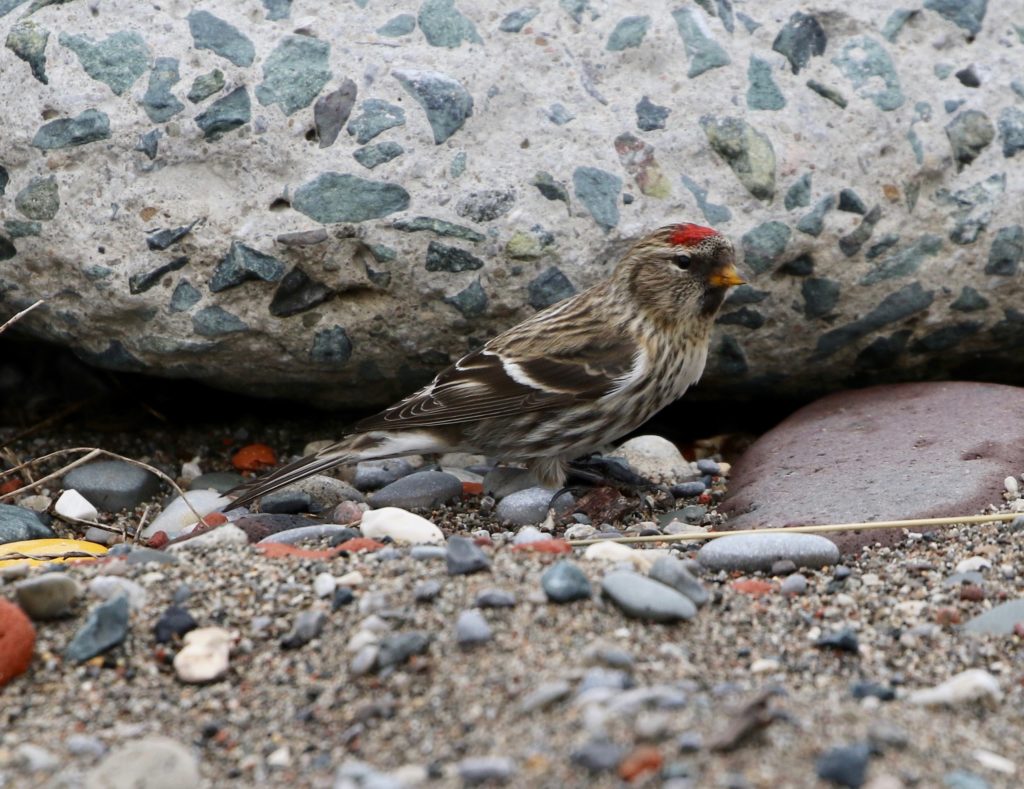
King Eiders are large, powerfully built ducks, and they’re famous divers. The Cornell Lab of Ornithology says they can probably “dive to greater depths than any other duck species.” The two I was watching would disappear below the water’s surface—usually together—for more than a minute at a time. When they popped into sight again, they always had something black and shiny in their bill. They were feeding on the Zebra Mussels that coat much of the floor of Lake Ontario.

After swallowing a mussel, the Eider would often rear up, look around, and flap its wings in satisfaction, the eiderly version of a victory dance.

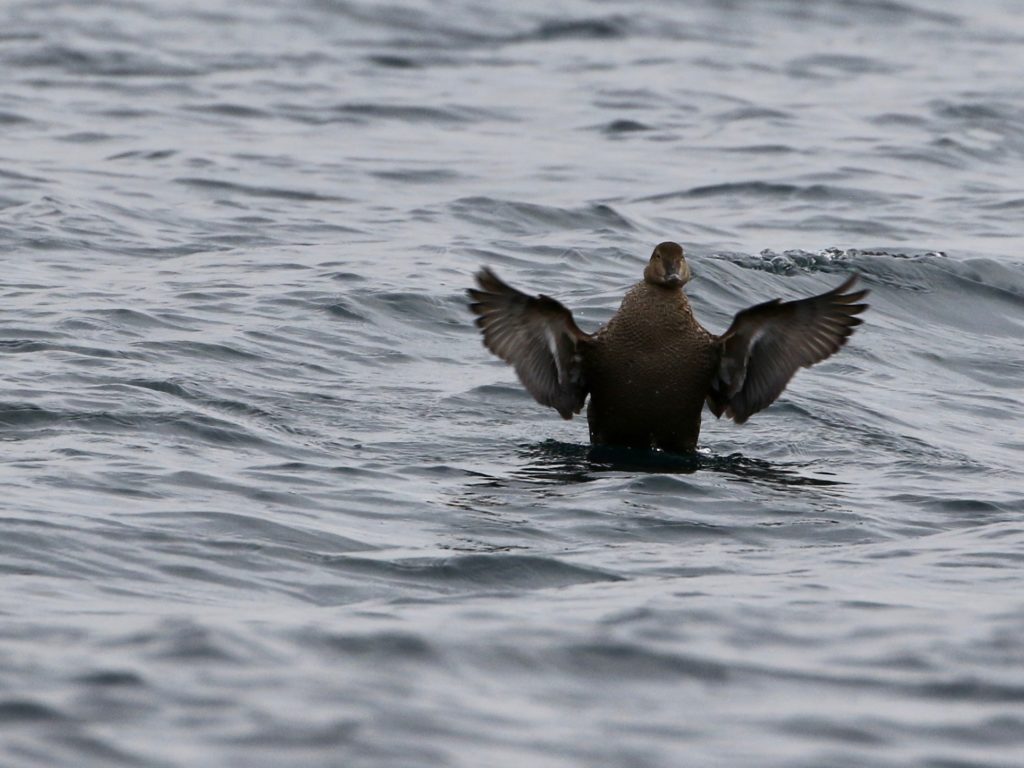
Each time the ducks dove to get another mussel, they would resurface closer to where I was sitting. Since the day was cloudy, the light wasn’t great, but I began to get shots that showed more detail of plumage and feather patterns. I wondered how far in they would come.
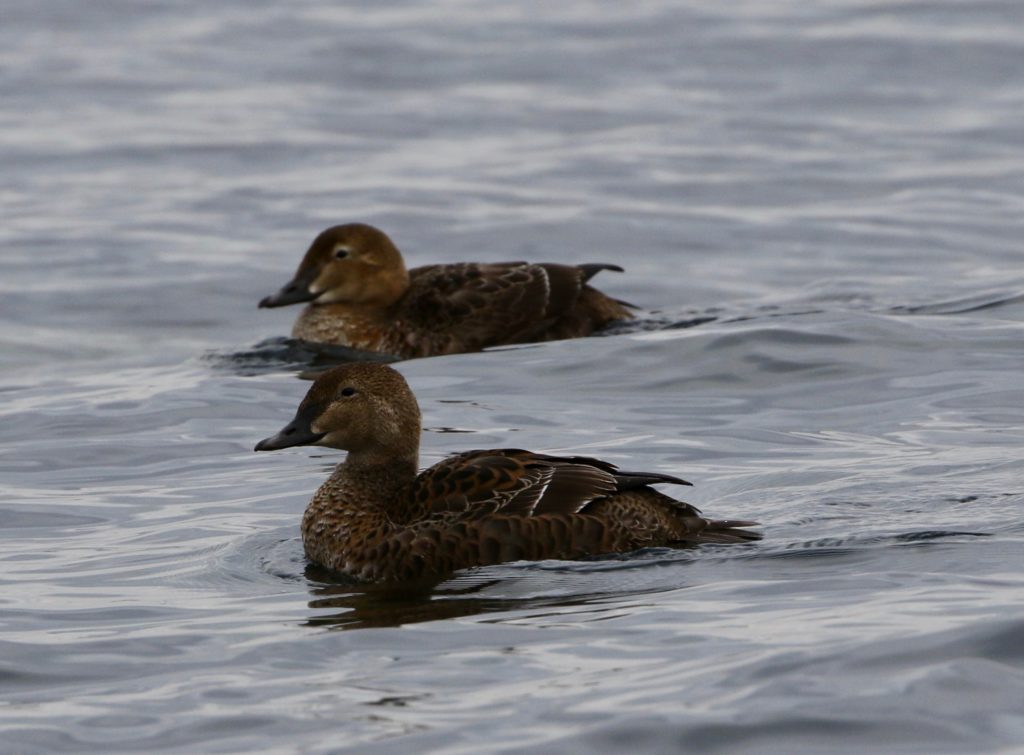
Drifting closer and closer, the two ducks rounded the point and disappeared to my left. I got up and followed and was surprised to find that they’d drifted right in to shore and were feeding on the algae and barnacles that covered the boulders there.

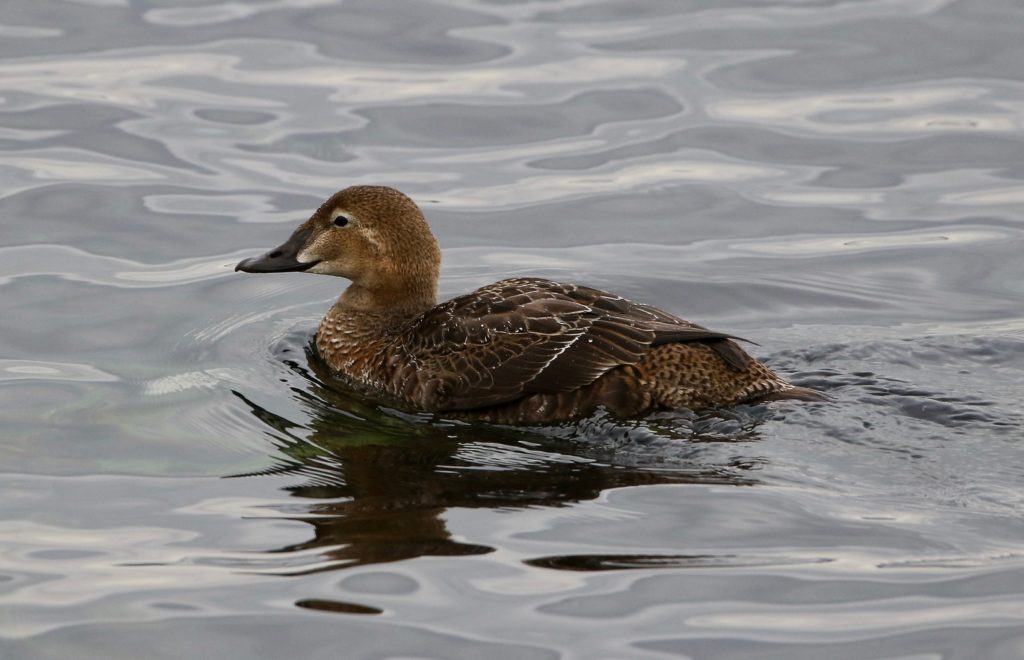
I started taking photos of the ducks that by now were practically at my feet, and the camera clicked and buzzed. But nothing distracted the Eiders, and they continued feeding until they’d eaten their fill. Only then did they allow themselves to drift out into the lake again. As they were leaving, one of the ducks flapped her wings, as if in farewell. I watched them go, marveling over the rare gift of their presence.

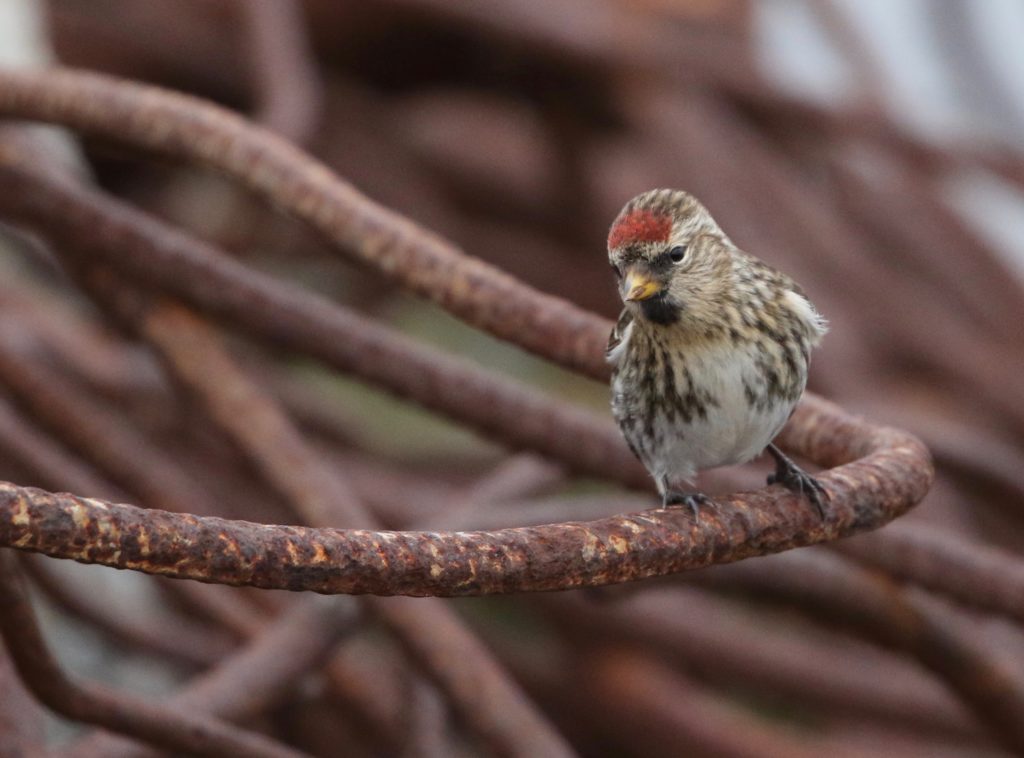
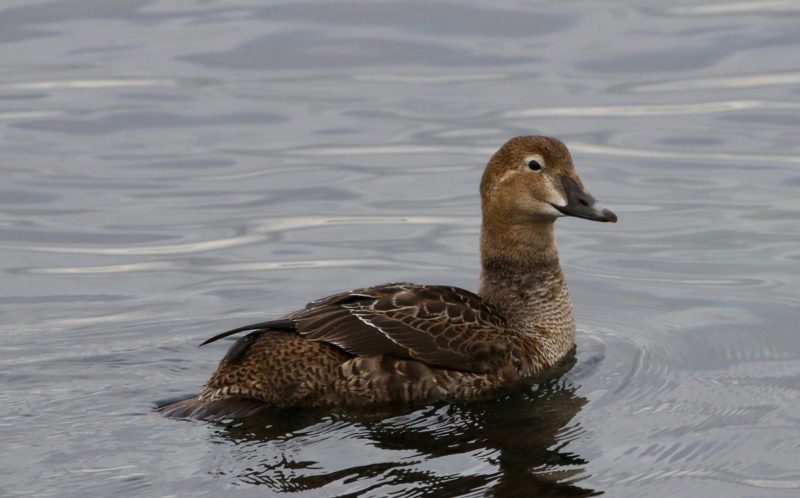
Fantastic!
Thanks so much for YOUR gift.
I was out on the Spit last week, walking for a change — it’s amazing how the bleakness draws me in, further and further. until I realized how far I had to walk back. I think you were right to describe in as Scandic…
V
Thanks, Vid–I’m really glad you enjoyed it. The Spit is a special spot, for sure. All the best for the holidays!
I loved the story of the eiders. It’s amazing what you can find out when you just observe–but then, that’s what all birders know! I also loved the photos of the smaller birds. They are so beautiful and when you think about it, so hardy. A lesson in survival.
A point about sharing this edition: I found that clicking on the mail icon didn’t take me to a place where I could put in my friend’s email. Instead, I clicked forward on the left side but I’m not sure if the site operates fully when it’s forwarded-for example, I don’t think I could go through to Read More on the first page….my friend is also a bird watcher and participates in the bird observation for the …I’m not sure…the Naturalist Society? The government? I know that when I’m at her house she will interrupt to start counting and will write something down. I think she’d like your blog so I guess one way or another she’ll find a way to get to it. Thanks for this issue!
Hi Jeannette–thanks very much for your comments–it’s good to know that people are reading and enjoying these posts. I’m not sure about the mechanics of forwarding posts to other addresses, but I’ll check to see what I can find out. In the meantime, if you want to send me your friend’s email address, we can add her to the subscriber list and ensure that she gets a copy of this post.
Hi Jeannette,
Thanks for bringing this to our attention. I’ve added “share” buttons for Facebook, Twitter and email at the bottom of all posts. Please let me know if there are more links you’d like to see. Try it out with your friends to see if it works for you.
Colin (the web designer guy)
Ed,
A gorgeous read and photo essay. I marvel at your observational skills & intimate perception.
Blessings to the Elders for devouring dreaded Zebra Mussels.
A stellar and inspiring work for such strange days.
Happy Christmas to you & your family.
Cheers
Thanks so much, Kathleen–glad you enjoyed it. And thanks for the Christmas good wishes. I hope you’re having a wonderful holiday, wherever you are. Here’s to 2021–it can’t possibly be any worse than its predecessor.